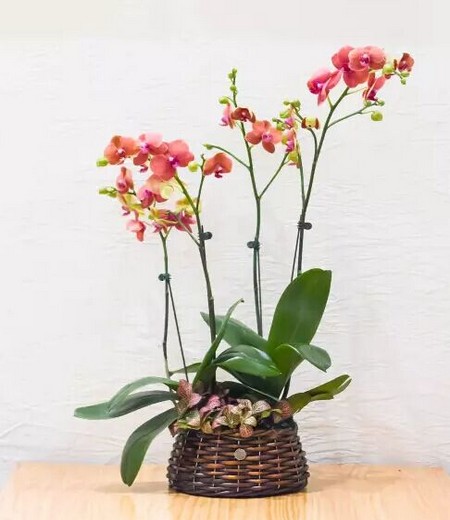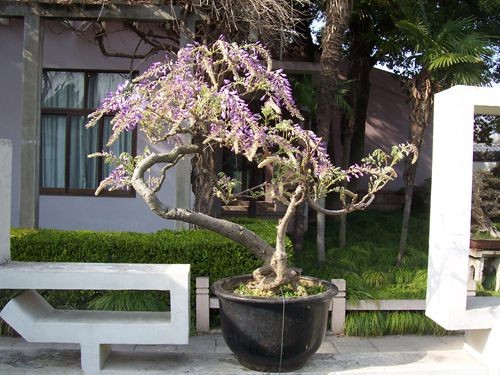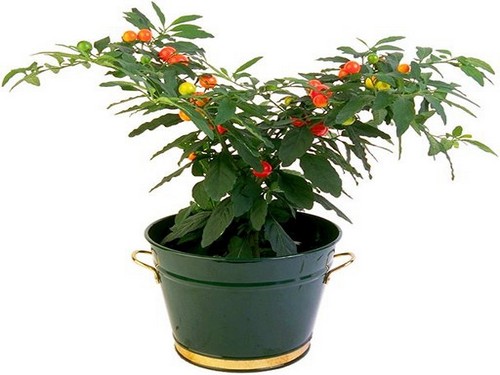Planting techniques of potted Phalaenopsis
The butterfly orchid gets its name from the shape of the butterfly, which means I love you and symbolizes nobility and elegance. It is one of the most popular flowers in the Spring Festival. It is favored by the world for its bright colors, diverse varieties and graceful posture. Festivals and high-end banquets are decorated with Phalaenopsis. Phalaenopsis can be put in a pot or placed on a single plant, which has a good appreciation value.

The tissue culture bottle seedlings introduced in production were placed on the flower rack for about a week to adapt to the natural environment for a few days, and then removed from the bottle. It should be soaked in 1000 times carbendazim solution for 2-3 minutes, then rinse with water after it is removed, then gently clean the culture medium attached to the root with a short brush, and then rinse with clean water, otherwise it is easy to mildew. After sterilization, the seedlings were planted with fine water moss, which should be soaked for 3-4 hours, then washed and squeezed dry, and sterilized. When planting, wrap the roots of the seedlings with water moss and plant them in a suitable soft basin. The water moss should be loose and tight, place in a semi-sprouting place, maintain a relative humidity of 70%-80%, and do not water within 2-3 days after planting. In the later stage, we should pay attention to ventilation and regular irrigation.
The cultivation of Phalaenopsis requires good ventilation in the roots, and the roots of the fern plant Osmunda Osmunda are commonly used. Dry the root, cut it into 5 cm long segments, and then add some rotten leaf soil or peat and mix it with coarse sand or perlite. If Phalaenopsis is planted in an ordinary basin, it is generally better to use a porous basin, and a shallow basin should be used for breathability. the height of the basin is preferably less than the diameter of the pot. it can also be planted in a basket made of wood strips or wire and tied to the stems of tree branches or tree ferns. Flowerpots generally put half a basin of broken tiles to facilitate drainage. If a hanging basket is used, a thin layer of peat moss must be laid at the bottom of the basket to prevent the loss of soil from the wood strips or meshes.
Generally speaking, Phalaenopsis needs to be changed every year. When the root system of the plant begins to grow again (usually in spring), it is the most suitable time to change the pot. Whether it is potting or changing pots, new plants should not be watered immediately, and leaves are usually only sprayed once a day for the first three or four weeks.
Phalaenopsis generally needs a stable warm and humid environment all the year round. The most suitable temperature is 25: 28 ℃ in daytime and 18: 20 ℃ at night. It should be noted that Phalaenopsis is very sensitive to low temperature and will stop growing when it is exposed to 15 ℃ for a long time. In general, the humidity of Phalaenopsis cultivation should be kept at 70%-80% throughout the year. Can spray water to the leaves once a day, it is best to use spray, do not let water droplets stay on the leaves of Phalaenopsis, if left on the leaves overnight, there will be black spots on this part. Phalaenopsis like a well-ventilated environment, avoid muggy, poor ventilation is easy to cause decay. Phalaenopsis needs bright warm light all year round, and it is generally necessary to avoid strong direct light.
Time: 2019-05-25 Click:
- Prev

Key points of planting techniques of wisteria bonsai
Wisteria has strong taproot, so it is advisable to dig lateral roots as much as possible and bring land when transplanting. More than planting in early spring, it is necessary to set up a frame before planting, and tie the coarse branches to the rack to make it climb along the shelf. Because of the long life of wisteria, thick branches and luxuriant leaves, the scaffolding material must be solid and durable. When young trees are first planted, the branches cannot form flower buds.
- Next

Cultivation techniques of coral bean potted landscape
Coral bean red fruit, one autumn, in the green leaves against the background is extremely beautiful and attractive. It is a superior fruit plant, this plant is a small shrub of Solanaceae, its plant height up to 1 meter, but often cultivated as a year or two. Fruit color bright, for viewing. Multi-use seed reproduction
Related
- Fuxing push coffee new agricultural production and marketing class: lack of small-scale processing plants
- Jujube rice field leisure farm deep ploughing Yilan for five years to create a space for organic food and play
- Nongyu Farm-A trial of organic papaya for brave women with advanced technology
- Four points for attention in the prevention and control of diseases and insect pests of edible fungi
- How to add nutrient solution to Edible Fungi
- Is there any good way to control edible fungus mites?
- Open Inoculation Technology of Edible Fungi
- Is there any clever way to use fertilizer for edible fungus in winter?
- What agents are used to kill the pathogens of edible fungi in the mushroom shed?
- Rapid drying of Edible Fungi

